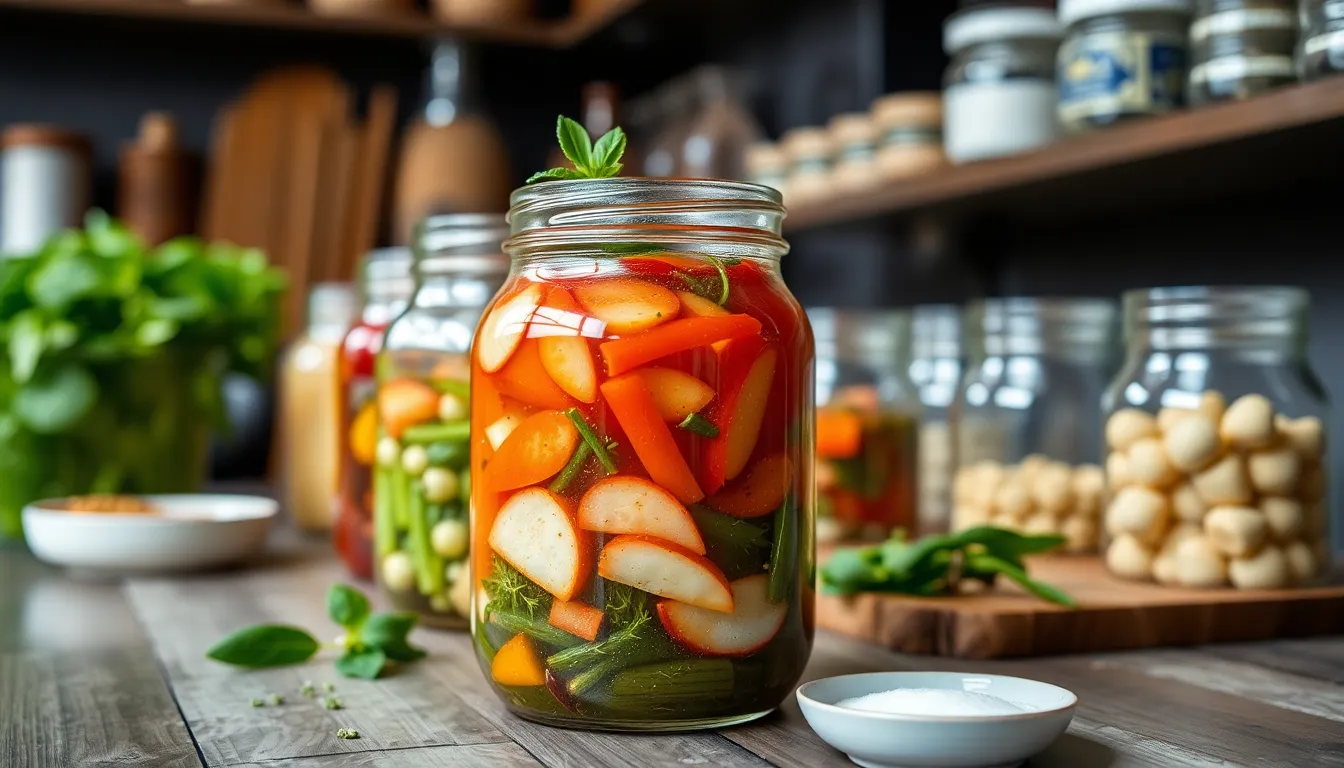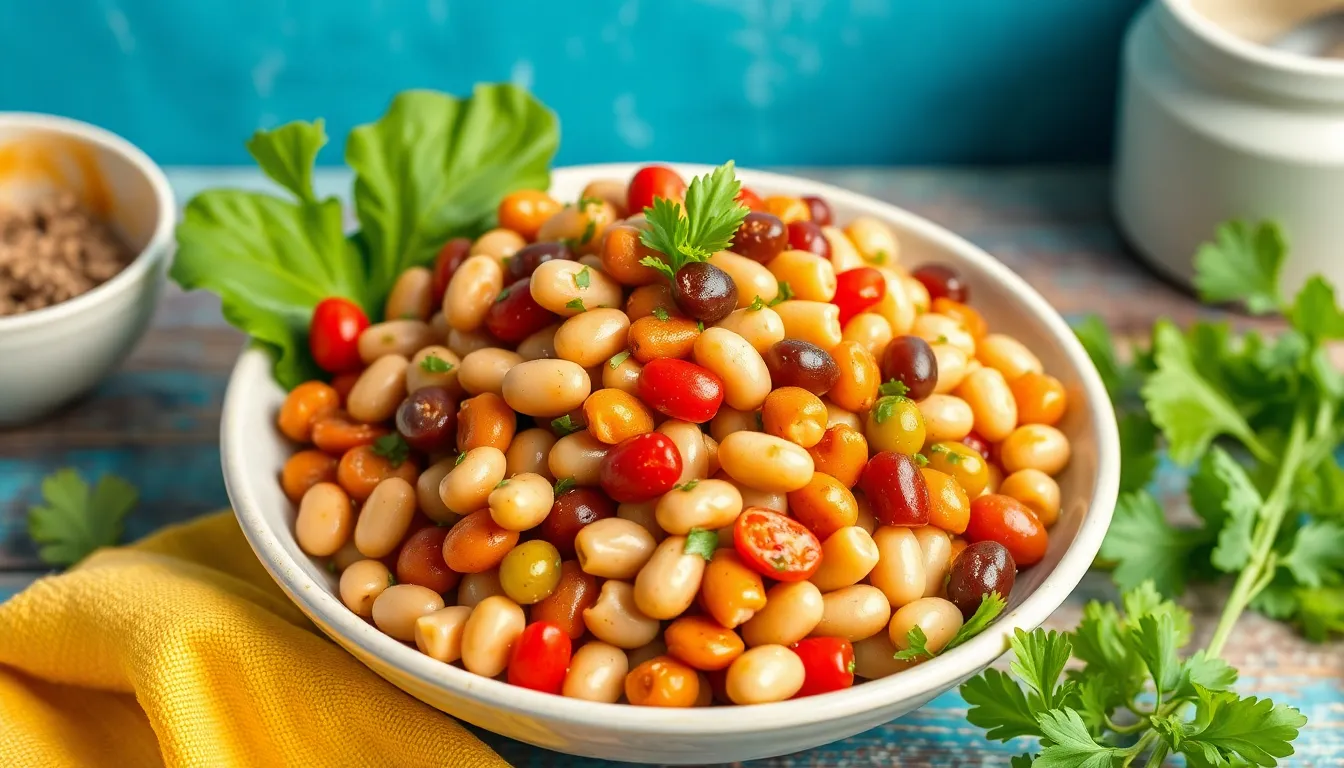body {
font-family: Arial, sans-serif;
line-height: 1.6;
margin: 20px;
padding: 0;
}
h1, h2, h3 {
color: #333;
}
h1 {
text-align: center;
}
table {
width: 100%;
border-collapse: collapse;
margin: 20px 0;
}
th, td {
border: 1px solid #ddd;
padding: 8px;
text-align: left;
}
th {
background-color: #f2f2f2;
}
tr:nth-child(even) {
background-color: #f9f9f9;
}
The Best Fermentation Jars: What You Need to Know
Fermentation is an age-old preservation technique that not only helps in extending the shelf life of food but also enhances its flavors and nutritional value. From tangy sauerkraut to creamy yogurt, fermented foods have gained popularity due to their numerous health benefits. One crucial aspect of the fermentation process is choosing the right fermentation jar. This article will cover everything you need to know about fermentation jars, including types, key features, recommendations, and tips for usage and maintenance.
1. Understanding Fermentation
Fermentation is a metabolic process that converts sugar to acids, gases, or alcohol using microorganisms like yeast and bacteria. It’s a natural process that has been used for centuries to preserve food. In the context of food, fermentation can also improve the digestibility of nutrients and enhance flavors.
Benefits of Fermented Foods
- Probiotics: Fermented foods are rich in probiotics, which are beneficial bacteria that support gut health.
- Nutrient Absorption: The fermentation process can enhance the availability of nutrients.
- Flavor Enhancement: Fermentation adds distinctive flavors and complexity to foods.
- Preservation: Fermentation increases the shelf life of foods without the need for refrigeration.
Common Types of Foods That Can Be Fermented
- Cabbage (sauerkraut, kimchi)
- Milk (yogurt, kefir)
- Fruits (fermented fruits, fruit wines)
- Grains (sourdough bread)
- Vegetables (pickles)
2. Types of Fermentation Jars
When it comes to fermentation jars, there are several types to choose from, each with its own set of benefits and drawbacks. Understanding these options can help you find the perfect jar for your fermentation needs.
Overview of Different Types of Fermentation Jars
- Glass Jars: Widely used and versatile, glass jars are perfect for small-scale fermentation.
- Ceramic Crocks: Ideal for larger batches, ceramic crocks are traditional and often come with weights.
- Plastic Containers: Lightweight and affordable, but may not be as durable as glass or ceramic.
Comparison of Fermentation Jars
| Type | Material | Size | Lid Type | Pros | Cons | Price Range | Ideal Uses |
|---|---|---|---|---|---|---|---|
| Glass Jar | Glass | 1-5 liters | Screw-on or clamp lid | Non-reactive, easy to clean, visible contents | Fragile, may not hold large volumes | $10-$30 | Small batches of vegetables, fruits, or grains |
| Ceramic Crock | Ceramic | 5-20 liters | Stone lid or weights | Durable, excellent for larger batches | Heavy, can be expensive | $30-$100 | Large quantities of kimchi or sauerkraut |
| Plastic Container | Plastic | 1-10 liters | Snap-on lid | Lightweight, affordable | May retain odors, less durable | $5-$15 | Short-term ferments or brined vegetables |
3. Key Features to Look For in a Fermentation Jar
Choosing the right fermentation jar is essential for successful fermentation. Here are some key features to consider:
Size and Capacity
Consider how much you plan to ferment at once. Smaller jars are great for trial batches, while larger jars or crocks are ideal for bulk fermentation.
Material Durability
Glass and ceramic are generally more durable and non-reactive than plastic, making them ideal for fermentation.
Airtight Seals
A good fermentation jar should have an airtight seal to keep out contaminants while allowing gases to escape.
Ease of Cleaning
Look for jars that are easy to clean, as cleanliness is key to successful fermentation.
Availability of Accessories
Some jars come with accessories such as weights and airlocks, which are beneficial for specific fermentation techniques.
4. Recommended Fermentation Jars
Here are some top fermentation jars on the market, each offering unique features and benefits:
Top Fermentation Jars
- Jar 1: Fermenting Glass Jar by Pickle Pusher
- Description: A sturdy glass jar designed specifically for fermenting vegetables.
- Features: 1.5 liters capacity, airtight lid, wide mouth for easy filling.
- Price: $25
- Jar 2: The Perfect Pickler Ceramic Crock
- Description: A large fermentation crock that holds up to 5 liters of food.
- Features: Comes with weights, airlock lid, and traditional design.
- Price: $75
- Jar 3: Kitchen Fermenter Set by Mason Tops
- Description: A complete set for beginners, including jars and accessories.
- Features: 2 wide-mouth jars, lids, weights, and instructional booklet.
- Price: $30
Side-by-Side Comparison of Top Fermentation Jars
| Brand | Features | Price | Customer Reviews | Recommended Ferments |
|---|---|---|---|---|
| Pickle Pusher | 1.5L, Airtight Lid, Wide Mouth | $25 | 4.8/5 (200 reviews) | Vegetables, Sauerkraut |
| The Perfect Pickler | 5L, Weights, Airlock | $75 | 4.7/5 (150 reviews) | Pickles, Kimchi |
| Mason Tops | Includes Accessories | $30 | 4.9/5 (100 reviews) | Yogurt, Fermented Fruits |
5. Tips for Using Fermentation Jars
Here are some essential tips for successfully using your fermentation jars:
Preparing Ingredients and Brine
- Ensure all ingredients are fresh and clean.
- Use non-iodized salt for brine solutions, as iodine can inhibit fermentation.
Fermentation Process Overview
- Fill the jar with prepared ingredients and brine.
- Seal the jar properly and place it in a cool, dark location.
- Allow the fermentation process to take place over several days to weeks, depending on the recipe.
Monitoring Fermentation Progress
Check your fermentation jar regularly for signs of bubbling and change in color. Taste the contents periodically to determine your preferred level of fermentation.
Troubleshooting Common Issues
- If you notice mold, remove it carefully, and ensure the jar is sealed properly.
- If the brine level drops, add more brine made with non-iodized salt and water.
6. Cleaning and Maintaining Your Fermentation Jar
Proper cleaning and maintenance will prolong the life of your fermentation jar:
Best Practices for Cleaning
- Wash the jar with hot, soapy water after each use.
- Rinse thoroughly to remove all soap residue.
Tips for Storage and Maintenance
- Store your jars in a cool, dry place when not in use.
- Avoid stacking jars on top of each other to prevent breakage.
How to Extend the Lifespan of Your Jar
Handle glass jars with care to avoid cracks and chips. Avoid sudden temperature changes, which can cause glass to shatter.
7. Frequently Asked Questions (FAQs)
Common Questions About Fermentation Jars
- Can I use any jar for fermentation? While you can use various containers, it’s best to choose jars specifically designed for fermentation to ensure safety and success.
- How long does food take to ferment in a jar? Fermentation time varies depending on the type of food and temperature, usually ranging from a few days to several weeks.
Answers to Clarify Misconceptions
- Do I need to refrigerate my fermentation jar? No, fermentation typically occurs at room temperature until desired flavor is achieved, after which you can refrigerate to slow the process.
Conclusion
Choosing the right fermentation jar is essential for successful fermentation at home. With the various types available, along with their features and specifications, you can confidently select one that best suits your fermenting needs. Remember to experiment with different ingredients and techniques, and don’t hesitate to share your fermentation experiences in the comments below!
Additional Resources
- Fermentation Recipes
- Recommended Reading on Fermentation Techniques
- Follow us on Twitter or Facebook for updates and community sharing!




